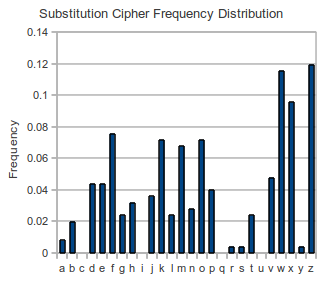

ThiscourseaimstoprovideyouwithdetailedknowledgeofimportanttechnologiesandapplicĪtionthatareusedintheinternetduetothebroadnatureofthisfieldthecoursecoversonlysĮlectedtopicsfocussingfirstonsomeadvancedtopicsininternettechnologiesegwireless Decoding using rot 21 (the reverse gives): If e = j, then j is +5 from e so we can assume this is rot 5. HfyntsxfwjuwtanijiytzxjwxtkymjnsyjwsjyymnxpstbqjiljbnqqmjqudtzĪ b c d e f g h i j k l m n o p q r s t u v w x y zĨ 9 1 4 0 27 2 18 20 60 7 8 16 40 0 3 22 5 39 39 16 0 25 31 45 12 Tsxfsixjwanhjxjluunuyaatnudtzbnqqqjfwsmtbymjnsyjwsjybtwpxfsimtbxjwanhjxfsifuuqn Qfsxrtgnqjnsyjwsjyrzqynhfxyfsiymjsfxjqjhyntstkhzwwjsyfsisjcyljsjwfyntsfuuqnhfyn Jqjhyjiytunhxkthzxxnslknwxytsxtrjfiafshjiytunhxnsnsyjwsjyyjhmstqtlnjxjlbnwjqjxx Ymnxhtzwxjfnrxytuwtanijdtzbnymijyfnqjipstbqjiljtknrutwyfsyyjhmstqtlnjxfsifuuqnhįyntsymfyfwjzxjinsymjnsyjwsjyizjytymjgwtfisfyzwjtkymnxknjqiymjhtzwxjhtajwxtsqdx This is a known rot cipher, but we don't know what number: Using this you can break a cipher, or get a plaintext which you can then deduce the correct plaintext. The most frequent letter in the ciphertext is probably 'e', and so on. Using an online tool such as this, you can find the most common letters and most frequent substrings. If you know that the text is a substitution, and the ciphertext is quite large, then you can use the above facts to try and break the cipher.

Two letter words nearly always have 1 vowel, 1 consonant.If spaces are included in the ciphertext: 't' - 'r' is a lot closer.įor simple substitutions, there are some more very useful pieces of information (still higher to lower): Note: Quadrigrams and Trigrams are less effective on shorter ciphertexts, and even bigrams and unigrams can be unreliable for really short ciphertexts to a point where there is no useĪnd of course you gotta include a few graphs (courtesy of wikipedia):Īs you can see, 'e' is by far the most frequent letter. Quadrigram frequency: that, ther, with, tion, here, ould, ight, have, hich, whic, this, thin, they, atio, ever, from, ough, were, hing, ment.Trigram frequency: the, and, tha, ent, ing, ion, tio, for, nde, has, nce, edt, tis, oft, sth, men.Bigram frequency: th, he, in, en, nt, re, er, an, ti, es, on, at, se, nd, or, ar, al, te, co, de, to, ra, et, ed, it, sa, em, ro.Unigram frequency: etaoinshrdlcumwfgypbvkjxqz.Here is the stats for analysis on the english language in brief below and all ordered from high to low: Frequency analysis is the study of the frequency of letters or groups of letters in a ciphertext, which can then be used to help deduce what certain letters are.Ĭomputers have calculated that in the english language, the order of the most frequent letters from high to low is etaoinshrdlcumwfgypbvkjxqz. This is one of my favourite ways of cracking ciphers, although it really only works best with substitutional or rotational ciphers, though both of those can have keys.


There are a couple of different ways to solve such ciphers: However you don't know any of the keys, just the length. You have an asymmetric cipher, which of course is harder to break. Asymmetric - two keys used (one public, one private).Distinguishing algorithm - you identify the cipher from a random permutation.Global deduction - you discover the method of encryption and manage to find the plaintext, but not the key.Total break - you work out the key and the plaintext.It depends what you are looking for and what's good enough for you. There are different methods and different results. 'the art or process of deciphering coded messages without being told the key.' NOTE: This is a guide to solving polyalphabetic cryptograms as it says in the question, and not transposition ciphers like it says in the title


 0 kommentar(er)
0 kommentar(er)
